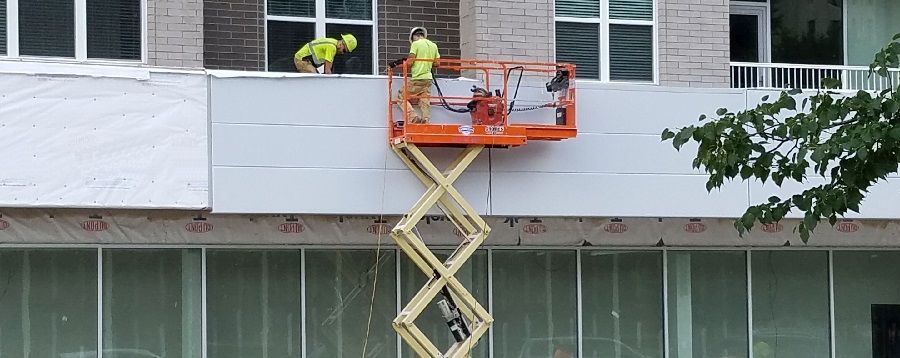
Scissor Lifts: The Ongoing Safety Debate

There are approximately eight deaths per year across the U.S. involving scissor lifts, according to the 2014 New England Safety Training Alliance’s Scissor Lift Training guide. Additionally, the Center to Protect Workers Rights published an Aerial Lift Safety guide that counted 64 total deaths associated with scissor lifts in a seven year study; 44 percent of these deaths resulted from falls, 30 percent were caused by a lift collapsing or tipping over.
Currently, OSHA has only two regulations pertaining to scissor lift safety:
29 CFR 1910.67: requires a body belt and lanyard be worn at all times; requires workers be standing anytime the lift is in use
29 CFR 1926.453: construction-specific, requires everything listed above; guardrails are also required
In the grand scheme of things, there are relatively few deaths associated with scissor lifts;
however, many of them could have been (and can be) prevented with directives from government officials and innovations from scissor lift manufacturers.
Clarity In Regulations
The fall harness debate is one that continues, not only among federal regulators, but also with the workers who are required to use them. Harness supporters argue that scissor lift operators should be made to wear a harness like all others who work at heights. The main argument against them is that if a worker does fall, the force from their weight could tip the lift over anyway. Or, if the lift does not tip over, a worker dangling from a lanyard could be injured by swinging back into the unit itself.
Some say harnesses provide a false sense of security and that wearing them restricts movement. Though the aforementioned regulations require a lanyard and harness, subsequent regulatory rules, specifically 29 CFR 1926.502(d)(23), prohibit fall arrest systems from being attached to guard rails.
Some forklift training companies have called for OSHA and the American National Standards Institute (ANSI) to make clear distinctions between fall arrest and fall restraint harnesses. The previous are designed to stop falls as they’re happening, while the latter prevents them entirely. Mobility is limited with restraint harnesses, but worker safety should be the top priority.
New Innovations Don’t Address Safety
Guard rails have been standard on virtually all types of scissor lifts for years. Changes in how lifts are built could be coming in the near future, but will likely have little impact on safety issues.
A March 2014 study published in the Open Journal of Safety Science and Technology evaluated eight projects that had introduced equipment upgrades meant to make mining safer and more efficient. One of them involves two new scissor lifts introduced in 2010 by different manufacturers. The key differences were technical, specifically the ability to open guard rails on every side.
A new Genie hybrid scissor lift was introduced at the 2014 Rental Show in Orlando and made available to the public a few months later. It is specifically designed for rough terrain and has built-in generators to charge batteries on the fly. But no new safety measures were included.
There don’t appear to be any major regulatory or design changes forthcoming pertaining to scissor lift safety. The burden will remain on individual construction and other project managers to keep their workers as safe as possible.
Aerial Lift Resources:
- Visit OSHA’s Aerial Lifts fact sheet.
- Visit the NIOSH Aerial Lifts page and use their Hazard Recognition Simulator.
- Visit the OSHA Fall Protection page for information and tips.
- Browse fall protection safety signs at ComplianceSigns.com.

